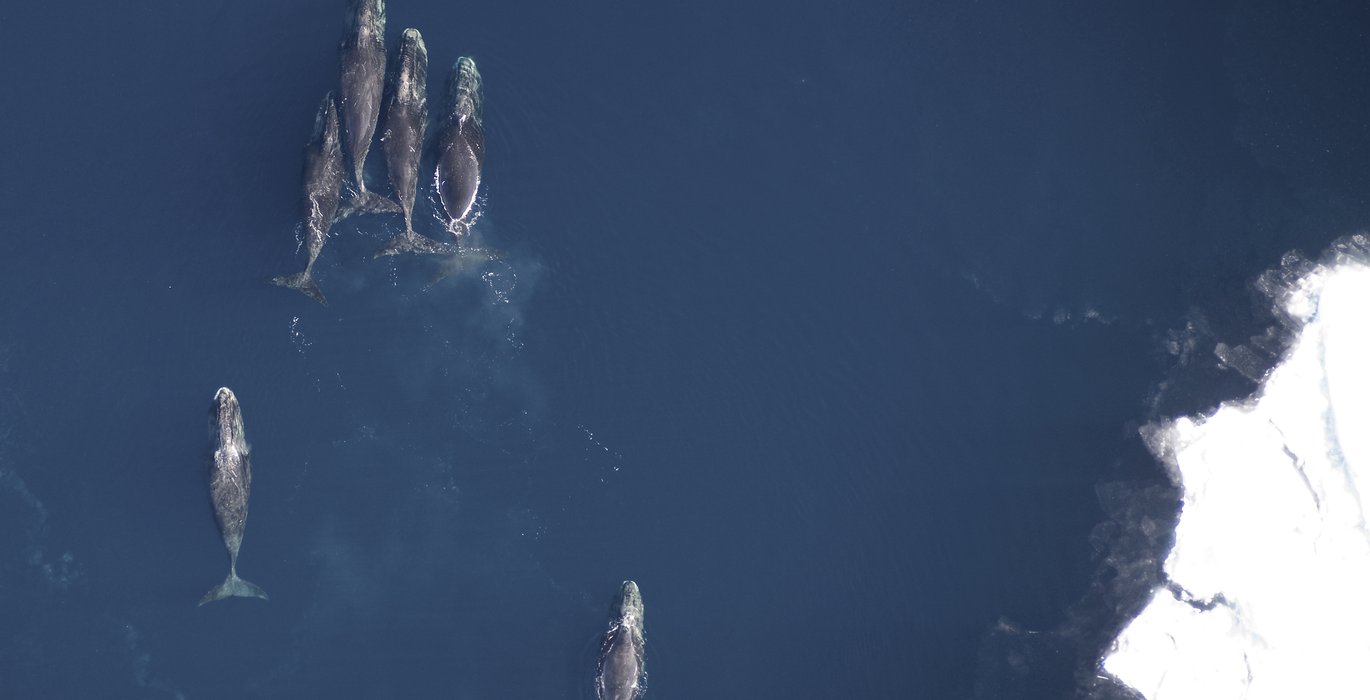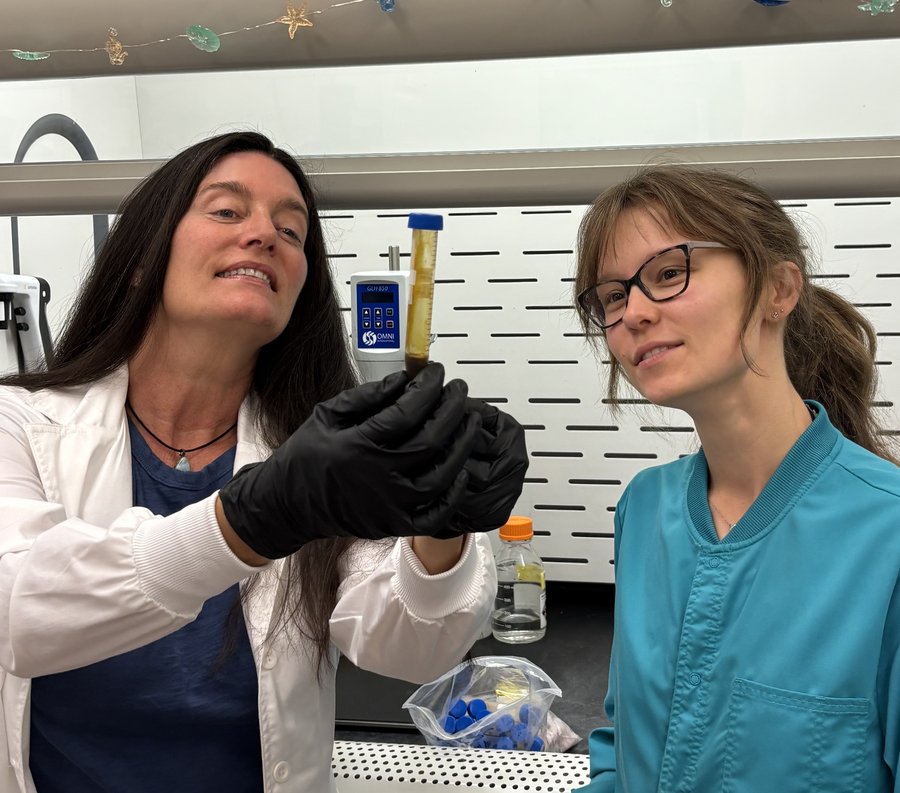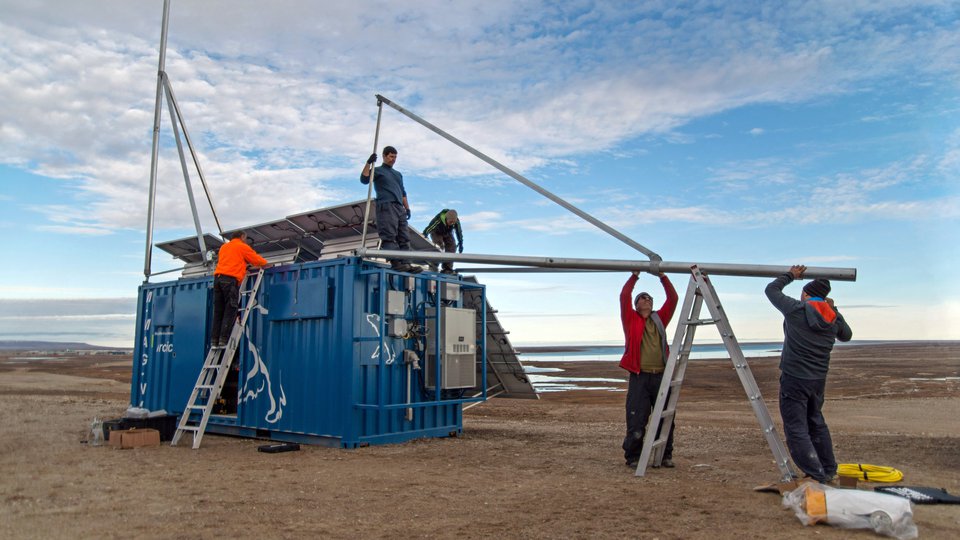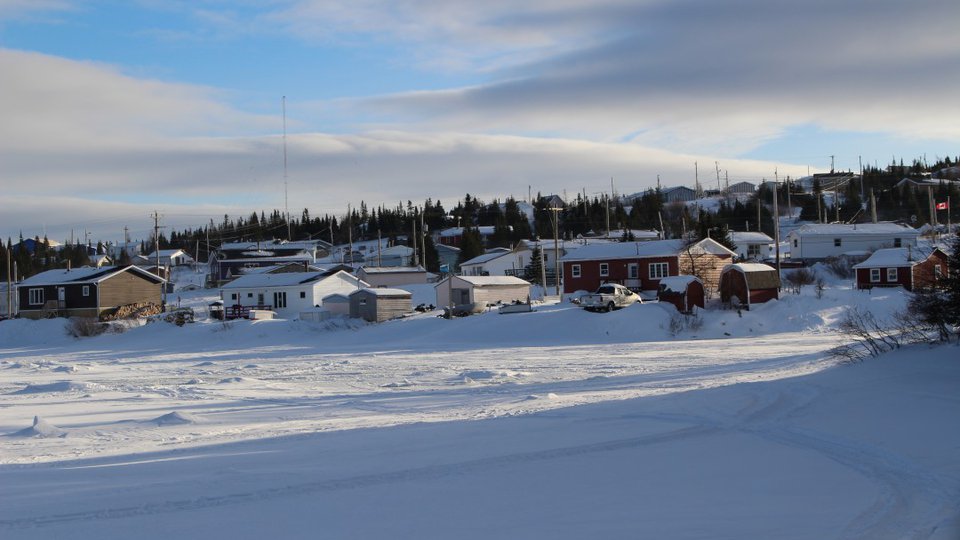
November 13, 2025
In Alaska, researchers are tracking climate change through a surprising source—whale feces. A 19-year study of bowhead samples, recently published in Nature, shows how a warming Arctic is impacting the food web, including species that are vital for subsistence in the region.
As climate change leads to warmer waters and melting sea ice, increases in harmful algal blooms are spreading toxins throughout the food web. Since bowhead whales are at the top of that web, they’re an ideal species to see how the entire food system is being impacted.
The annual subsistence harvest of bowhead whales aided sample collection, allowing researchers to observe changes over time.
“Looking at the feces, we get a snapshot of what the whale was eating in the last week or so,” says study co-author Kathi Lefebvre, who is a Research Biologist with NOAA who works on the Wildlife Algal-toxins Research & Response Network (WARRN-West). “Basically, these whales are sampling for us,” she says.

Image shows the harmful algal cells that produce potent neurotoxins described in our study: Pseudo- nitzschia (cigar shaped diatoms that produce domoic acid) and Alexandrium (roundish shaped dinoflagellates that produce saxitoxin). Photo credit: Brian Bill NOAA Fisheries/Northwest Fisheries Science Center, Seattle, WA, 98112 USA
Bowhead whales can weigh up to 200,000 pounds (90,000 kg), measure more than 60 feet (18 meters) in length, and have blubber that is up to 1.6 feet (nearly 50 cm) thick. They are believed to live more than 100 years, and some may have a lifespan of over 200 years. These filter-feeding baleen whales gather their food from throughout the water column, consuming zooplankton such as copepods and krill (which are species that eat algae), making them a good indicator of toxin concentrations in the area.
Lefebvre and other researchers teamed up with the North Slope Borough and Alaska Eskimo Whaling Commission. They worked with tribal councils to gather 205 bowhead whale bowel samples from 11 Native American communities harvesting bowhead whales from Alaska’s Beaufort Sea between 2004 and 2022.
“We have collaborations with Native Alaskan communities that comprehensively utilize their environment for subsistence, and part of that is bowhead whales,” Lefebvre says. “Bowhead whales are a critical component of subsistence use in the Arctic, and they have been doing this for thousands of years. There is great interest in the health of these whales in those communities.”
Harmful algal blooms can produce toxins that lead to serious and potentially fatal human health conditions. One of the species of particular concern is Pseudo-nitzschia, which is a diatom that can produce the neurotoxin domoic acid (DA), which can lead to amnesic shellfish poisoning. Alexandrium catenella is a dinoflagellate that is another significant species of concern, since it produces the neurotoxin saxitoxin (STX), which can lead to paralytic shellfish poisoning.

Bowhead whale spouting in the Arctic ocean near Greenland. Bowhead whales are believed to live more than 100 years, and some may have a lifespan of over 200 years. (Credit: Canva)
To learn more about the environmental conditions associated with harmful algal blooms and related toxins, the researchers analyzed fecal samples and environmental data. The researchers confirmed that whales had greater levels of those toxins during periods of warmer temperatures and in larger ice-free areas.
According to the authors, “algal toxin prevalences and concentrations were significantly correlated with ocean heat flux, open water area, wind velocity and atmospheric pressure.” Lefebvre added that they “were surprised at the incredible mechanistic link that we could make with these data, that we could show through biological, oceanic, [and] atmospheric data this direct link.”
While the toxins detected in whale feces do not necessarily pose an immediate hazard to the whales themselves, they provide broader indications about the ecosystem at large and the food web, which could negatively impact the health of humans and wildlife.
Researchers are seeking to learn more about the impacts on other species that are important for food security in the region, including walruses. Lefebvre noted that many Bering Sea communities rely on walruses, and they may have levels of saxitoxin that are either at or approaching levels that could cause harm.
“There is a massive concern about these toxins increasing in these ecosystems that are being utilized,” she said, especially since Alaska monitors commercial seafood, but not recreational or subsistence-harvested foods.

Dr. Kathi Lefebvre (left) and Emily Bowers (right) preparing a whale fecal sample for algal toxin extractions. Photo credit: Cathy Laetz NOAA Fisheries/Northwest Fisheries Science Center, Seattle, WA, 98112 USA
Lefebvre also emphasized the value of traditional ecological knowledge, noting that Indigenous communities “see the impacts of climate change first and provide a ton of information about that,” making close collaboration essential.
She said people in the region have relied on these crucial marine resources for thousands of years, and their findings about toxin levels heighten concerns about food security.
“It’s absolutely critical for survival, for economic well-being, for cultural practices, for nutrition, really every aspect.”
The study’s authors emphasize the importance of continued monitoring in marine mammals in the Arctic, and they are collaborating with tribal councils to learn more about the impacts on subsistence foods. They aim to determine which species accumulate toxins (and which parts of the animal they build up in), how long they persist in the animals, and the effect of these toxins on them.
She emphasized the power of collaboration, as this study relies on the collective efforts of Indigenous communities, scientists, policymakers, fisheries managers, oceanographers, and climate modellers, all working together to have a better understanding of these changes.
“It’s just really an incredible collaborative piece of work that is really defining a real impact of climate change.”
Banner Image: Aerial view of six bowhead whales traversing the Beaufort Sea. Photo credit: Amelia Brower NOAA Fisheries/AFSC/MML, Seattle, WA, 98125 USA & North Slope Borough. National Marine Fisheries Service (NMFS) Permit No. 14245





